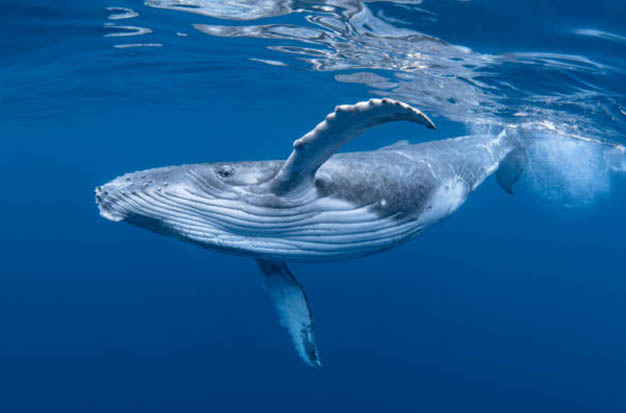How Long Whales Can Remain Pregnant? That you should know.
Whales are marine mammals and have many traits in common with other mammals, such as the need to breathe air (they get their oxygen above the water’s surface), being warm-blooded (some species have thick layers of blubber to keep them warm), having hair (some species have hair at birth), and giving birth to their young (as opposed to most fish and amphibians, which lay eggs).
Female whale gestation periods share many characteristics with human pregnancies, including reproduction and the length of the pregnancy from conception to delivery. In actuality, it resembles giving birth to a human almost exactly, with the exception that, depending on the species of the whale, the gestation period can last considerably longer.
Table of Contents
Average Gestation Period
So, how long does a whale typically gestate for? The average gestation period can range from 10 to 18 months depending on the species of whale. While some species can mate all year long, the best time of year for whales to mate and give birth is in the chilly winter months when different species migrate to the warmer tropical environments to mate and give birth.
Males will contend with one another for the chance to mate with the female during mating season. The aggression and dominance exhibited by whales varies from one species to the next, with some males fighting or strutting while others seeming relatively carefree.
Some species engage in a variety of acrobatic feats, charge one another, and exhibit dominance as a way to demonstrate their youth. Other species will sing to entice a mating partner or herd the female away so that rival males have a smaller chance of mating with her.
It is common for females to mate with multiple males in a single season in order to increase the likelihood that she will give birth to a healthy child. In fact, some male species will attempt to wash the competing male’s sperm out by producing large amounts of their own sperm.
The female spends 9 to 18 months in her uterus (womb) after becoming pregnant, growing and carrying the child. These marine mammals will return to their feeding grounds after several months of mating in preparation for the upcoming mating season.
Note: While many whale species travel long distances during their annual migrations to give birth and feed, some whale species are known to stay close to home year-round.
The female whale will go through a gestation period during which her child develops in her uterus during this time (when the female becomes impregnated). Through the umbilical cord, the child receives nutrient-rich blood as it grows until it is fully formed and prepared for birth. The umbilical cord will also assist in removing waste from the baby to ensure healthy growth in addition to supplying nutrients.
The umbilical cord is severed after birth, leaving the newborn whale with a belly button, just like in humans. The mother whale feeds her young after giving birth by secreting milk, which the young whale consumes from the mother’s nipple.
Depending on the species, the majority of baby whales continue to receive nutrition from their mother’s milk nipple for 6 months to 2 years. Up until the young whale is capable of hunting for food on its own, this nursing period lasts.
A young whale may continue to suckle from its mother’s nipple even after she stops lactating and producing milk in some cases. In these situations, young whales frequently develop psychological dependencies that take longer to overcome than average; however, all young whales eventually break free from this psychological bond.
The young whales reach sexual maturity and are prepared to find other whales to mate with after a number of years of independent living and hunting. Depending on the species and sex of the whale, the age of sexual maturity for these marine mammals can range from 5 to 20 years.
When these whales reach sexual maturity, they will reproduce similarly to their parents by mating and having their own young in order to pass on their genes to the following generation. The average lifespan of a whale can range from 20 to 200 years, depending on its species, habitat, health, and social environment.
Due to a combination of their diet, cramped quarters, and lack of social community, marine mammals kept in captivity are known to have significantly shorter lifespans than those in the wild. For instance, it is known that the killer whale has a wild lifespan of 40 to 70 years. The average lifespan of those held captive is 20 years or less.
The lifespans of many whale species have been reported to range from 30 to 80 years, with a few species living up to 100 years and one species, known as the “bowhead whale,” having a lifespan of up to 200 years. More information about the typical lifespan of whales can be found at: What is the lifespan of whales?

Gestation Period Comparisons
Here are the gestation periods of various whale species so you can get a better idea of how long whales take to reproduce once they become pregnant:
- Minke Whale: 10 months (females typically have one young every two years).
- Narwhal Whale: 14 to 15 months (limited information indicates that females give birth to one young every three years).
- Sperm Whale: 14–16 months (females give birth every 3–6 years).
- Gray Whale: 13.5 months (data not available)
- humpback whale: 11 – 12 months (reproduction occurs every 2 – 3 years).
- Beluga Whale: 14–15 months; females give birth to a single calf every three years.
- Blue whales have a lifespan of 11–12 months (females mate every two–three years).
- 15–18 years old (the average is 17 years) for killer whales. Every 3 to 5 years, women give birth.
Note: The largest species of dolphins are known as killer whales, which are members of the dolphin family. As their name might suggest, they are not whales. The gestation periods of various cetaceans differ significantly, as you can see.
Although it’s possible that this isn’t the case, it seems that species that don’t have a specific mating location or don’t live in the same place all year round may have more erratic gestation lengths. This is especially true for whales that migrate regularly between their breeding grounds and feeding grounds.
This may make sense given that whales must maintain a seasonal gestation length when migrating between cold environments and warm tropical regions between seasons to avoid giving birth in an unnatural location for their reproductive needs.
Whale Migration And Reproduction
Some whales, like the toothed whale, are constantly moving, while others aren’t. Whales migrate, among other things, in order to feed and give birth in warmer waters. Their calves won’t have enough blubber at birth to withstand extremely cold temperatures, and their bodies don’t need the additional strain.
Migrating can take different forms. The right whale species, for instance, has a pregnant female that migrates. Both sexes migrate in humpback whales.
There is no indication that most toothed whales migrate. For the entirety of their lives, sperm whale females and their calves remain in the breeding grounds near the equator, while males are more likely to travel alone to colder waters when they are not breeding.
Baleen whale migration has been tracked and studied, and it appears that they travel in similar ways. The migratory patterns of gray and humpback whales are similar.
12 Animals With The Longest Gestation Period
Compared to the rest of the animal kingdom, human mothers have relatively long gestation periods, but some animal mothers go even longer.
However, not all lengthy gestations result in large offspring; the size of the offspring is typically a determining factor. The list of animals with the longest gestation periods is shown below.
Elephants
Elephants have the longest gestation periods of any mammals, carrying their young for 18 to 22 months before giving birth.
Highly intelligent animals frequently go through lengthy developmental phases. There is a lot of development for elephants to do in the womb because they are the world’s largest living and largest-brained land animals.
Manatees
A large manatee’s pregnancy may not be obvious from the way it looks, but this gentle giant carries its young for nearly 13 months.
The extra weight is somewhat reduced by spending the entire day in the water, but a manatee mother is still to be admired for her endurance.
Camels
Thoughtfully consider this: Camel personalities are notoriously stubborn and grumpy. camels have a gestation period of 13 to 15 months.
The month of conception can affect the date of birth; for example, a birth in November is delayed by 18 days compared to a birth in May.
Other camelids, like llamas, also have lengthy gestation periods, lasting roughly 330 days (11 months).
Giraffes
The gestation period for giraffes lasts between 400 and 460 days (13 to 15 months).
The baby must be large enough to brace for a long fall because the mother gives birth standing up despite being the tallest land animal in the world. (It’s interesting to note that the embryonic sac usually bursts during a fall.)
When baby giraffes are born, the world is a dangerous place because lions and other predators are nearby. This is one of the causes of the protracted delay.
Velvet Worm
Large mammals are not the only species with lengthy gestation periods. Some creatures that resemble worms—like the velvet worm, for example—bear live young. This strange-looking animal can carry its young for up to 15 months.
Despite their name, neither they are real worms nor are they made of velvet. Their sensory hairs give them a velvety appearance because they cover their bodies.
They are especially intriguing to paleontologists because they are related to both true worms, such as the earthworm, and arthropods (spiders and insects).
Rhinoceros
Given their enormous size, it should not be surprising that rhinos, whose gestation periods range from 15 to 18 months depending on the species, are next on the list.
In addition, the lengthy gestation period makes it difficult to repopulate the population. Three of the five rhinoceros species are classified as critically endangered, making all five rhinoceros species either endangered or vulnerable.
Walruses
The gestation period of a walrus can last up to 15 to 16 months, making it the longest among all pinnipeds (a group of mammals that includes seals and sea lions).
The gestation periods for seal and sea lion mothers’ young are about 330 and 350 days, respectively. Additionally, of all pinnipeds, walruses have the lowest rate of reproduction.
Whales And Dolphins
It should come as no surprise that cetaceans, which include whales and dolphins, take great care in raising their young given that they are known for their high intelligence, intricate societies, and peaceful personalities.
While gestation times vary among species, orcas have the longest period among dolphins at around 17 months. The largest predators on earth, sperm whales, have been known to carry their young for up to 19 months.
Black Alpine Salamanders
Amphibious creatures known as black alpine salamanders give birth to live young and are found in the Central and Eastern Alps. Depending on the altitude where the salamanders live, their pregnancies can last for two to three years.
Usually, they give birth to two healthy offspring. The lifespan of this salamander has been calculated to range from 10 to even 20 years.
Sharks
Sharks are K-selected reproducers, which means they produce fewer well-developed offspring than the majority of fish, as opposed to a larger number of offspring who are not as developed.
The duration of pregnancy varies greatly depending on the species. While basking sharks can carry young for up to three years, the spiny dogfish shark can do so for about two years. Pregnancy can be delayed by the frilled shark for 3.5 years.
Tapirs
Even though tapirs have a similar long gestation period to horses and rhinos, they are actually more closely related to pigs and anteaters.
After 13 months of gestation, a tapir calf is born. In order to protect themselves from predators, newborn tapirs have distinctive brown and beige striped markings, but as they get older and more mobile, the pattern fades.
Donkeys
The average gestation period for a female donkey, also referred to as a jenny or mare, is about a year after mating, though some pregnancies can last nearly 14 months.
The Jenny can also go into “foal heat” and become pregnant again 5 to 13 days after the foal is born, if that weren’t enough.
Conclusion
Ovulation naturally occurs at the same time as male fertility in the majority of species, which reproduce only twice a year in the winter and spring.
Some whales can go for months without eating. During the spring and summer, they get their energy from the oil in their blubber and bone marrow. They can consume up to 4% of their body weight each day during those feeding months.
It’s enough to say that these cetaceans appear to have a system in place that is completely effective for them. We could learn a lot from these unique creatures’ mating behavior, migration and gestation, birthing process, and bonding processes! But it’s unlikely that any time soon we’ll be consuming plankton or enormous squid.





0